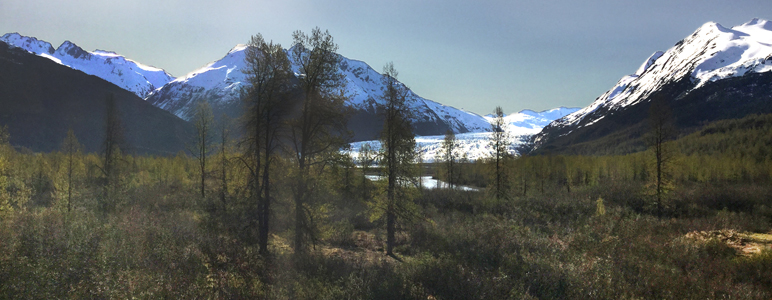


Usually I go on vacation to relax and unwind. Recently, I came back from a cruise more stressed than when I left because of what I witnessed going on with Alaska’s climate. When I left San Diego in mid-May, it was 56 degrees. I expected to land in Anchorage and find seasonal temperatures, but it was 74 degrees. Worse, locals told me the snow had disappeared two weeks earlier.
All week long everyone on board the ship was exclaiming what a gorgeous summer-like day it was in Alaska! But the temperatures should have been 20 degrees cooler.
As the Navy’s Regional Commander of the Pacific Northwest, I spent significant amounts of time in Alaska. But I had never seen so little snow. Anchorage had only 19.4 inches this past season; their average annual snowfall is about 75 inches!
What else I experienced
In the rainforest in Haines, which usually gets 21 feet of precipitation annually, they were a record 8 feet below normal. Visiting at the height of what should have been their rainy season I was told it had not rained for three weeks.
Throughout the state, we saw rivers that should have been swollen but had long since crested from snowmelt, and this late in the season, chance of more snow is nil. We kayaked in a lake in Juno, which crested a month early. All of mountains streams that are lifeblood of the wildlife were drying because there was little snow. Park rangers commented they watch the tree line move upwards each year due to a lack of pack ice and snow.
At Glacier Bay, it was 47 degrees when we arrived, 74 when we left. The on-board park ranger reported that he had never seen so many calving events on the glacier in one afternoon. It’s unprecedented, but in Alaska, and around the world, glaciers are melting.
The most alarming thing I saw was at Ketchikan. Usually, at the end of the salmon spawning season mid-late in July, hundreds of eagles gather to fish. But they were there in mid-May. The park ranger explained the eagles were confused by the weather into believing the spawning season was upon them. The problem, there were no fish, only hundreds of hungry predators.
The park ranger also discussed the impacts of what happens when the glaciers melt — the land rises up. When a heavy glacier recedes, it ceases to compress the land it sits on. This destroys houses, buildings and roads and cuts off river and stream channels.
Even the tundra is melting
Layers of permafrost that have been in place for millions of years are melting, resulting in the need to relocate whole towns and villages. Of significance, permafrost sequesters massive amounts of carbon and methane. When it melts, it releases those greenhouse gases into the atmosphere, ultimately trapping more of the sun’s heat and increasing global warming.
I returned from vacation profoundly shaken. While we work to fight the complex issues associated with climate change, before we even recognize what is going on, the environment of the Alaska we know may disappear.
Clearly, we all must work to combat climate change. My trip reinforced my commitment to do what I do every day as executive director of the Center for Sustainable Energy, and I encourage others to join us in accelerating the transition to clean renewable energy.

